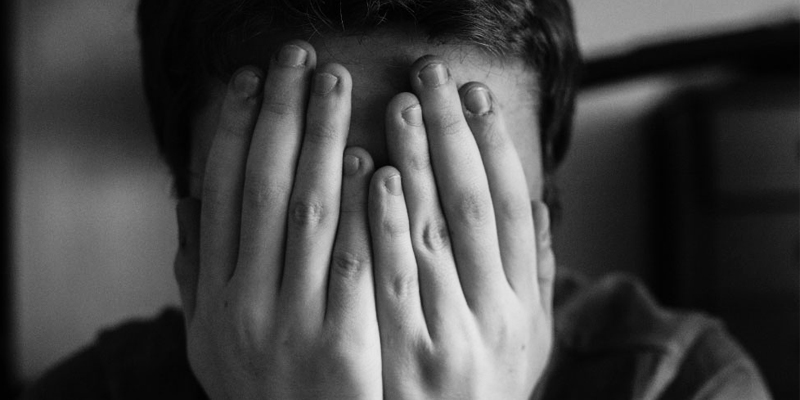Depression in people differs according to people and the environment they’re living in. There are several kinds of depressive disorders. The symptoms of various depressive disorders range from mild to severe.

Types of Depression
Following are the different types of depressive disorders:
Major Depressive Disorder
This is the most commonly occurring depression in people. Major depression obstructs the everyday life of people including their work, studies, and food habits. This depressive disorder occurs once and may re-occur in several episodes during the whole lifetime. The major symptoms of Major Depressive Disorder (MDD) are:
- Presence of distressed, unhappy and hopeless feelings in the person almost everyday
- Feelings of guilt and worthlessness
- Sudden anger outbursts
- Frustrated, restless and irritated mood
- Withdrawal from family, friends and community, and isolating oneself
- Lack of interest in daily activities
- Loss of interest in things he/she previously enjoyed, including sex
- Tiredness and fatigue
- Loss of sleep or excessive sleeping
- Loss of appetite or excessive eating
- Repeated thoughts of death and suicide
- Lack of concentration and proper-decision making
- Symptoms are accompanied by other physical ailments like headache, backaches and digestive problems
A person is diagnosed with MDD only if he/she shows five or more symptoms from the above listed inclusive of the feeling of extreme sadness and loss of interest in regular activities. The symptoms should last over the extend of two weeks, occurring almost everyday.
Dysthymia
Dysthymia, also known as persistent depressive disorder, is quite similar to major depressive disorder. The only difference is that the symptoms are relatively milder and occurring in chronic form (long-term). If a person shows following signs and symptoms, lasting for over two years, then he/she might be suffering from Dysthymia.
- Feeling distressed and sad most of the times
- Less eating or excessive eating
- Loss of sleep or excessive sleeping
- Loss in self-confidence
- Problem with concentration and remembering details
- Tiredness and fatigue
Bipolar Disorder
Bipolar disorder, also known as manic depression, is characterized by frequent change in mood and energy. The person may show hyper activeness (mania) and shift to low (depressed), with episodes of normal mood and feelings in between. When the person is going through the period of mania, he/she shows great energy level, talkative behavior, restlessness and fast movements. Similarly, when the person is going through a depressed period, he/she may show some or all symptoms of major depression. The person may eventually have hallucinations and delusions. Major signs and symptoms present when the person is going through mania are:
- Shifts in the mood from high (mania) to low, with occurrence of normal mood in between
- Hyperactiveness and increased energy
- Fast and over talkative
- Restlessness and irritated
- Lack of concentration and poor- decision making
- Unusual increase in self-confidence
- Engagement in high-risk behavior activities
- Rapid thinking, and shifting from one idea to another
Psychotic depression
Psychotic depression is majorly characterized by psychosis. Psychosis is an abnormal state where the mind gets detached from the external reality. This is a severe kind of depression where the person shows following signs and symptoms:
- Distressing hallucinations ( seeing or hearing things which aren’t real)
- Losing contact with the reality and having false beliefs (delusions)
- Extreme anxiety and paranoid behavior ( believing that all the people around is trying to harm him/her)
Seasonal Affective Disorder (SAD)
Seasonal Affective Disorder (SAD) occurs in a certain season. This is most common in winter, when the days are shorter and nights are longer. It is characterized by the following signs and symptoms:
- Mood shifts from high to low with the change in the season
- Loss of energy and fatigue
- Excessive sleeping
- Excessive eating, consuming more carbohydrates
- Weight gain
Postpartum Depression
Mothers go through Postpartum Depression after childbirth. Some mothers face a series of hormonal and physical changes along with the change in the social responsibility. Some of the major symptoms are:
- Loss of interest in baby
- Extreme anxiety
- Thoughts about harming the baby and oneself
- Loss of appetite
- Mood shifts
- Loss of sleep or excessive sleeping
- Feelings of guilt and shame
- Irritation and restlessness
- Loss of interest in pleasure activities that she previously enjoyed
Atypical Depression
Atypical depression is a kind of depression where the person is usually distressed and sad, but can have improvement in mood after a good incident. Some of the major signs and symptoms are:
- Increase in appetite and consequent gain in weight
- Excessive sleeping
- Tiredness and fatigue
- Heaviness or leaden feeling in the limbs
- Oversensitive to rejection and criticisms